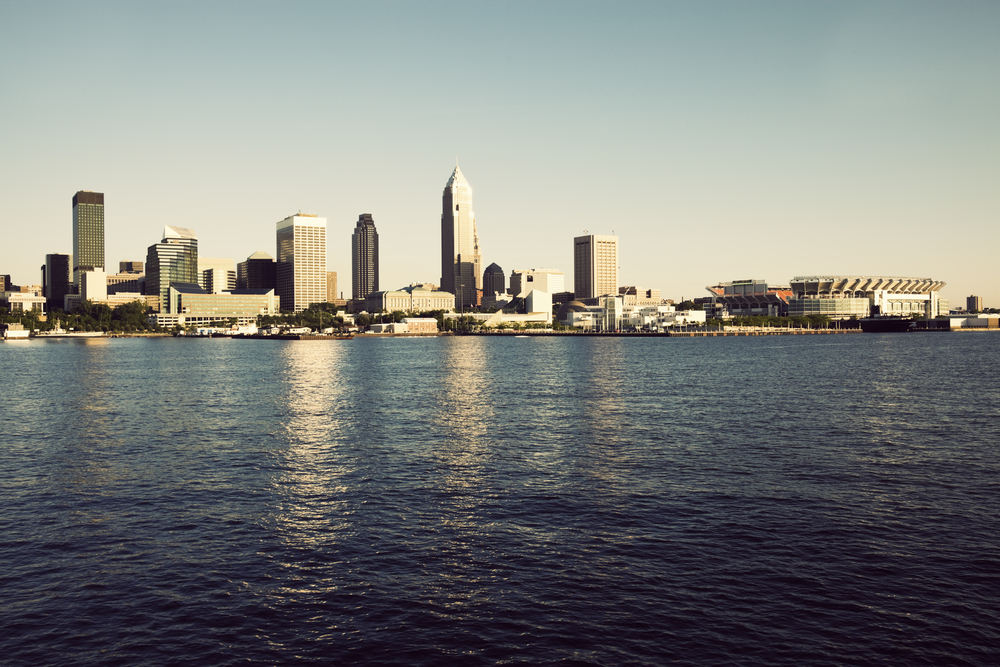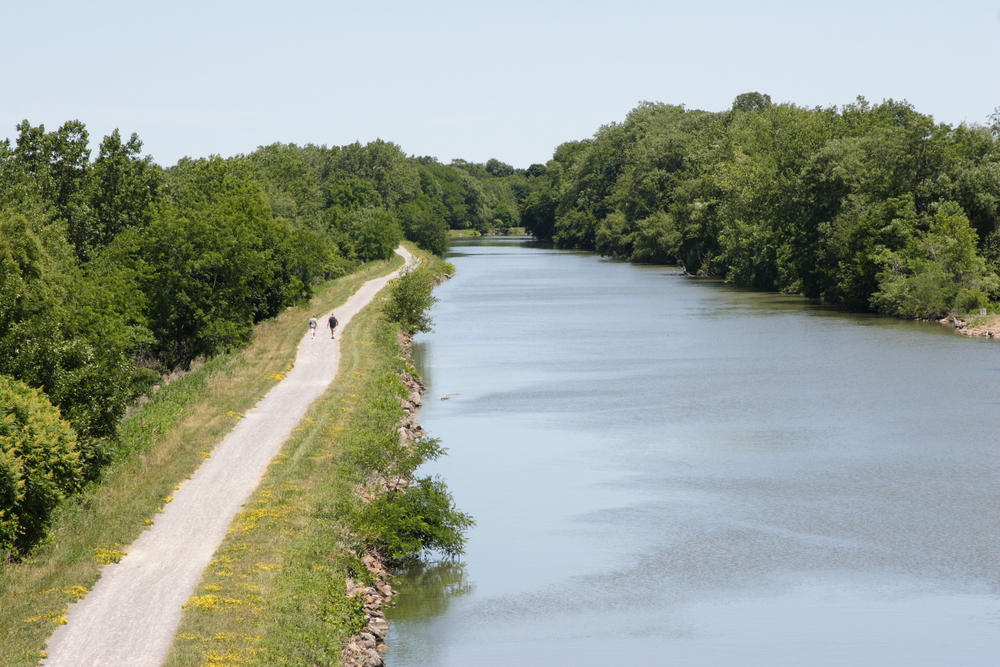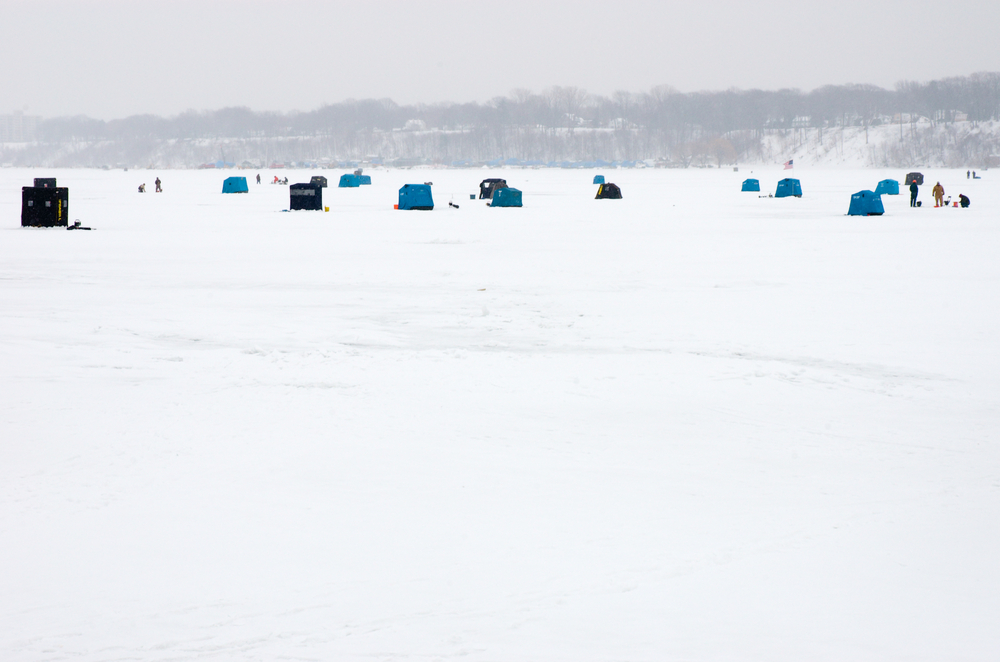Lake Erie Facts

Lake Erie is the warmest of all of the Great Lakes, but it also freezes over more than the other lakes. It is the fourth largest when measured in surface area, with round 9,910 square miles (25,700 square kilometers) and the smallest by water volume, with 116 cubic miles (484 cubic km), according the Environmental Protection Agency (EPA).
Lake Erie touches four U.S. states — New York, Pennsylvania, Ohio and Michigan — and the Canadian province of Ontario. Buffalo, N.Y., is on the eastern end, and Toledo, Ohio, is on the western end. Cleveland, Ohio, and Erie, Pa., sit on the southern shore.
As the southernmost of the Great Lakes, the majority of Lake Erie's water flows in through the Detroit River from the upper lakes — Lake Superior, Lake Michigan and Lake Huron — as well as tributaries such as the St. Clair River and Lake St. Clair.
Its main outlet is Niagara Falls. The Niagara River, the source of the falls, runs 36 miles (58 kilometers) and connects Lake Erie and Lake Ontario.
Lake Erie has a tail-like shape, which is reflected in its name, which is derived from erielhonan, the Iroquoian word for "long tail." The lake is about 241 miles (388 km) long, 57 miles (92 km) wide and boasts 871 miles (1,402 km) of shoreline, including islands. Its size makes it the 11th largest lake in the world, according to the Michigan Economic Development Corporation.
Lake Erie weather
Due to its southernmost position, Lake Erie is the warmest of all of the Great Lakes. While temperatures have reached as high as 85 F (29 C), water temperatures are generally in the low 70s F (21 C to 24 C) during the summer months, making Lake Erie a popular recreational area.
During the winter, water temperatures reach freezing, and the lake freezes over more than the other Great Lakes because of its shallowness. Its average depth is 62 feet (19 m) and its maximum depth is 210 feet (64 m).
Get the world’s most fascinating discoveries delivered straight to your inbox.
Water levels are 25 to 30 feet (7.6 to 9.1 m) in the lake's shallowest area, making it possible for strong winds to kick up fairly powerful waves.
Lake-effect snow has a huge impact on the surrounding communities, including Buffalo, N.Y.
Formation and history
Like all of the Great Lakes, Lake Erie is basically a divot formed from a moving glacier and is relatively young — less than 4,000 years old — in its current configuration.
Several native peoples lived on lake's shores, including the Erie tribe and the Iroquois. Lake Erie was the last of the Great Lakes to be explored by Europeans. French explorer Louis Joliet "discovered" the lake in 1669.
Battle of Lake Erie
The lake played a pivotal role in the War of 1812. The Battle of Lake Erie took place off the north shore on Sept. 10, 1813. U.S. Navy ships defeated the British Navy, gained control of the lake and regained Detroit. The site of the battle is now officially known as the River Raisin National Battlefield Park.
As the battle began, Captain Oliver Hazard Perry hoisted his battle flag, emblazoned with the words, "Don't Give Up the Ship." After the British surrendered, Perry sent a message to General William Henry Harrison: "We have met the enemy and they are ours." About 934 Americans fought in this battle and only 33 survived.
Erie Canal
The Erie Canal was one of the first gateways to the West. Completed in 1825, it connected Lake Erie in the west to the Hudson River in the east, a distance of about 360 miles (580 km). It opened up the West to settlers and offered an inexpensive way to transport cargo. It was enlarged in the mid-1800s and again in 1903 to keep pace with growing demands. Today, it is mostly used for recreation.
Lake Erie pollution
By the 1960s, Lake Erie had become sort of a "poster child" for water pollution. Pollutants from factories, waste from city sewers, and fertilizer and pesticides from farms made their way to the lake, according to Cleveland Historical. As a result, levels of phosphorus and nitrogen increased, which led to algae blooms. The toxic algae caused "dead zones" by depleting the oxygen, and dead fish littered the shoreline. And in 1969, the Cuyahoga River, which flows through Cleveland, Ohio, caught fire.
The federal government responded to this situation by passing the Clean Water Act in 1972. The law tightened regulations on industrial dumping.
While the water quality of Lake Erie has much improved, the lake continues to be prone to algae blooms and still has dead zones. "The dead zone in 2012 was the largest we've ever seen," researcher Anna Michalak, an earth scientist at the Carnegie Institution of Science at Stanford University in California, told Live Science. [Lake Erie Dead Zone: Don't Blame the Slime!] Low oxygen and algae blooms can affect the water supply for residents nearby.
Additional facts
Lake Erie is popular with sports fishermen and it boasts an extensive walleye fishery. Charter fishing boats also take tourists out to catch small mouth bass. Ice fishing is also popular on Lake Erie.
Lake Erie also has its own legendary lake monster — Bessie — which is mostly likely a huge sturgeon.
In 1999, Lake Erie was invaded by mayflies, which was seen as a sign of the lake's return to health and a balance of nature.
Due to its rich soil, the Lake Erie region has a large concentration of concord grapes.
Additional reporting by Alina Bradford, Live Science Contributor.
Additional resources
Kim Ann Zimmermann is a contributor to Live Science and sister site Space.com, writing mainly evergreen reference articles that provide background on myriad scientific topics, from astronauts to climate, and from culture to medicine. Her work can also be found in Business News Daily and KM World. She holds a bachelor’s degree in communications from Glassboro State College (now known as Rowan University) in New Jersey.




